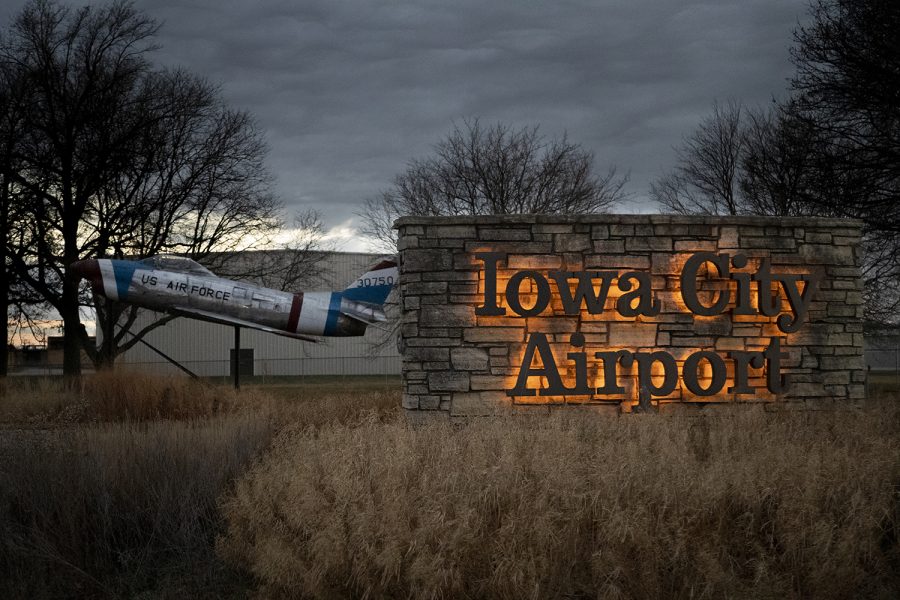Iowa City Municipal Airport reports 114 percent increase in economic impact
The airport brings in $24 million annually in total economic activity to the area.
The Iowa City Airport is seen on Thursday, Dec. 1, 2022.
December 4, 2022
The Iowa City Municipal Airport has doubled its economic impact since 2009.
The airport is bringing in $24 million annually in total economic activity to the Iowa City area, per the 2022 Iowa Aviation Economic Impact Report.
The airport opened in 1919 and is the oldest civil airport west of the Mississippi River that still stands in its original location.
The Iowa Department of Transportation last conducted the economic impact report in 2009. At the time, the study found the airport brought in $11.2 million annually. Economic activity at the airport increased by 114 percent from 2009 to 2022.
Aviation in Iowa brings in a total economic impact of $6.4 billion.
Tim McClung, Iowa Department of Transportation aviation director, noted the 2009 and 2022 aviation economic reports were conducted by two different consultants and may not be consistent in their methodology. The 2009 report was conducted by Wilbur Smith Associates and IMPLAN Multipliers. The 2022 report was conducted by Javiation.
However, both reports analyzed the same factors, so the scale of the increase indicates growth no matter the accuracy.
The economic activity report measures total annual operational revenue at the airport, including visitor spending, construction, and investments. McClung said the report is an overview of the impact the airport has on the community, but the most significant impact of the airport cannot be measured.
“The airport is a really great way to get people and goods moved from all corners of Iowa to all corners of the world, but that’s a little harder to measure, so we just measure the basic economic activity associated with the airport,” McClung said
Iowa City Municipal Airport manager Michael Tharp said the airport is the third most active general aviation airport in Iowa, with 84 total aircrafts based out of it. The airport’s primary function is business aviation, especially related to the University of Iowa.
“As the university has grown in its specializations and treatment levels and capabilities, traffic that focuses on patient transfers, organ donations, has become more focused on bringing patients from around the state to Iowa,” Tharp said.
RELATED: Commercial airlines struggle with increasing flight demand, lack of pilots
Tharp said three entities work out of the airport: UIHC Care Ambulance, Jet Air, and the UI research lab.
According to the 2022 Iowa Aviation Economic Impact Report, the UI Hospitals and Clinics air ambulance operates out of airports in Waterloo, Dubuque, and Iowa City.
Together, they total around $449 million in annual economic impact.
Tharp said the increase of economic activity can take place because the airport has been self-sufficient since 2018, which means it doesn’t receive funding or tax money from Iowa City.
“If you look around airports in the state, a lot of general aviation airports will get tax levy support,” he said. “Iowa City, we don’t have that. It’s something that I know the airport commission and myself were pretty proud of.”
The economic report stated the Iowa City Municipal Airport has a fixed-base operator, which is an airline that is allowed to operate out of that airport and provide aviation services.
Construction companies and developers add to the economic landscape of Iowa City and contribute to the airport’s economic impact.
Tharp said the increase in economic revenue is largely a result of renovations done at the airport.
“Since 2009, we’ve done some capacity enhancements, so our runway has been able to get a little bit longer,” he said. “While we haven’t expanded the footprint of the airport, we’ve been able to change some things like the design characteristics.”
According to the Iowa City Municipal Airport Twitter account, it has taken on multiple projects, including a terminal apron reconstruction and additional jet air storage tanks to double jet storage capacity.



